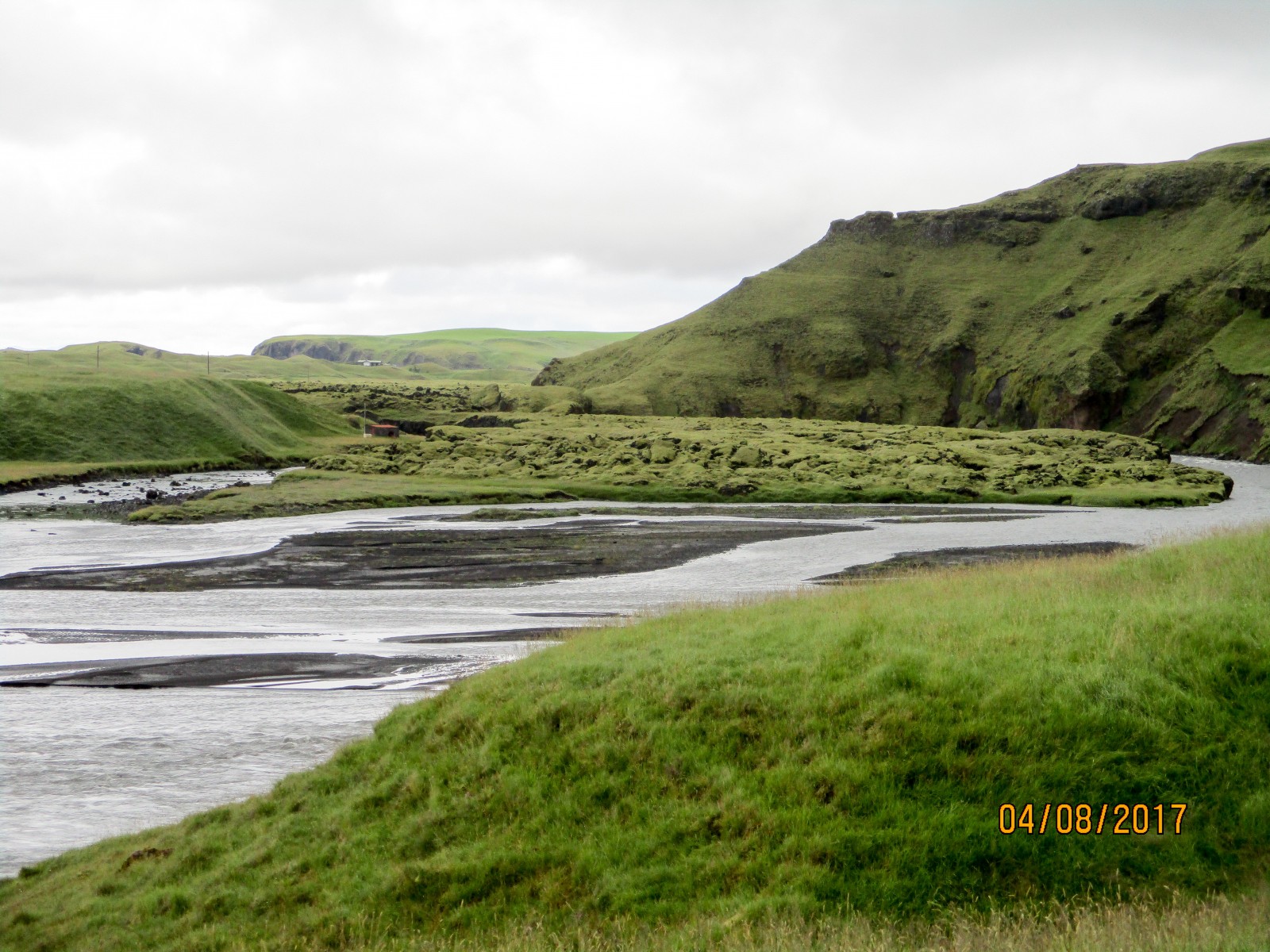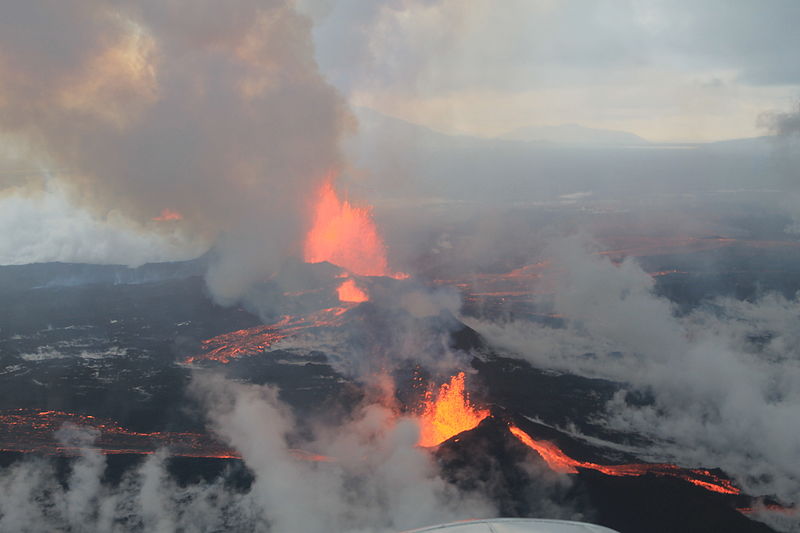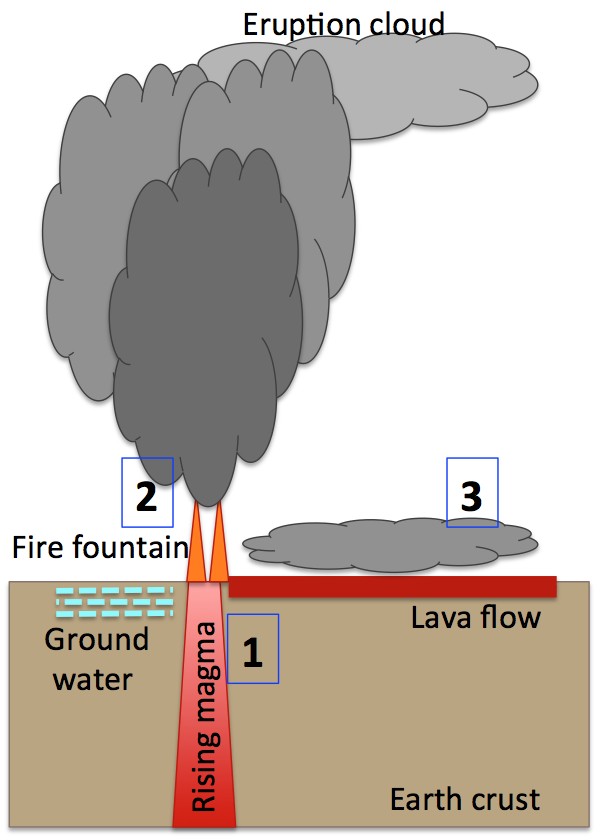![Fire, Fog, Frost, Famine – French Revolution? The Lakagígar eruption in Iceland, 1783-1784 [Part 1]](https://blogs.egu.eu/divisions/gmpv/files/2018/05/Figure1_southwestern_fissure_edit-700x400.jpg)
“On the 8th of June 1783, at Whitsun, there gushed forth from the mountains behind the summer pastures a fire which devastated land, cattle and humans with its effects, both nearby and far away”, wrote Reverend Jón Steingrímsson of Kirkjubæjarklaustur in his autobiography [2]. The “fire” which welled up from a volcanic fissure now known as Lakagígar (the craters of Mount Laki) was the biggest flood basalt eruption in written history, and led to the worst natural catastrophe Iceland ever endured. Within three years, the population dropped by about 20%. But was it merely the volcano that killed these people – or are humans also to blame?
PART I: The Fury of the Torn Earth
The Fires of the Skaftá River

Map of the surroundings of the Lakagígar. See here for an interactive map of Iceland.
Strange phenomena preceded the fiery outburst: a burning island had appeared southwest of Reykjavík due to a small submarine eruption, foul-smelling floods had surged down the glacial river Skaftá, and a slight bluish haze had been observed over the vast glacier Vatnajökull (signs of unrest at the volcanic system of Grímsvötn). From mid-May onwards, earthquakes shook the district of Síða, slowly increasing in strength. And then, on the sunny morning of Whitsun, a dirty, whirling plume emerged from the uninhabited mountains, spread southwards over the settlements, with growling thunders and showers of black ash. However, after a few hours, southerly winds drove the ash cloud back into the mountains. Reverend Jón was able to conduct his church service under clear skies, and the people hoped that the worst was over…
The opposite was the case. The river Skaftá dried up, and a few days later, a flood of fire emerged from its gorge. The lava followed the riverbed and slowly spread over the lowlands, burning down farms and mowing lands. Other farms were flooded by boiling-hot water where the lava dammed up the tributaries of the Skaftá. Within two weeks, the Lakagígar discharged some 6km3 of lava; in total, the eruption would eject 15km3.
By July 20th, the lava had advanced eastwards in the Skaftá riverbed, threatening the little parish church of Kirkjubæjarklaustur. Reverend Jón led his congregation to what he believed would be the last service conducted in this church. It was hazy and dark, except for bolts of volcanic lightning. The earth shook and trembled, and the bells echoed and wailed with the cracks of thunder, while Reverend Jón gave his sermon, telling his parishioners to submit to God’s will. When they left the church and headed to the tip of the lava flow, fearing for the worst, they found that the lava had miraculously stopped. The people believed that Reverend Jón had performed a miracle, halting the lava by the force of his prayers. Jón himself was convinced that God had stopped the lava, but being scientific-minded as well as deeply religious, he tried to figure out how God had achieved this, and concluded that the little rivers coming down from the hills must have cooled and solidified the lava [1].

The tip of the lava stream which followed the Skaftá riverbed and “miraculously” came to a standstill during Reverend Jón’s sermon on July 20th, 1783. The lava is now thickly covered by green moss. This location is still known as “Eldmessutangi” (the land spit of the fire sermon). Photo credit: Claudia Wieners
After the “fire mass”, the volcanic eruption seemed to abate. Only small amounts of lava trickled down the Skaftá valley. But nine days later, the northern part of the Laki fissure started to erupt, sending yet another flood of lava down the gorge of the river Hverfisfljót. The terrified inhabitants of the Síða district feared getting caught up between two fiery streams, but luckily the lava flows stopped just before the coastal marshes, leaving the travelling routes open. No one was killed by the lava, but when the eruption finally ceased in February 1784, 37 farms had been devastated by lava flows, dammed-up rivers, ash fall and sand storms [5] – almost 1% of all Icelandic farms.
The loss of farms was a tragedy for the local population, but the volcanic fog and ash caused a national catastrophe.
Foul Fog and Black Snow

Lava fountains, lava flows and plume formation during the fissure eruption at Holuhraun (Sept. 2014). The Lakagígar fissure was much longer and emitted roughly 10 times as much lava. Photo credit: Peter Hartree
The Lakagígar eruption was mainly effusive, but there was also some explosive activity due to violent degassing and interaction between lava and ground water. This generated a volcanic plume which covered the island in a thick haze and may have reached the stratosphere. It was this fog which gave the period after the eruption its name: “Móðuharðindin” – the Haze Hardships.

The formation of a volcanic plume. 1) Magma with dissolved gasses rises to the surface. Degassing starts due to decreasing pressure. 2) Violent degassing and evaporation of heated ground water thrust lava fragments into the air, leading to lava fountains, ash formation and a high eruption plume (up to about 12 km). 3) In addition, gases are slowly released from solidifying lava streams, contribution to a local haze.
The gases released by the eruption caused widespread destruction. H2S (hydrogen sulfide) smothered the whole of Iceland with a sickening smell of rotten eggs. But the 120 megatons of SO2 (sulfur dioxide) had worse effects [4]. The SO2 reacted with water vapour to form H2SO4 (sulfuric acid). H2SO4 attracts water molecules, forming little droplets which caused the haze. The sun appeared blood red or was blocked altogether. Acid rain burnt holes into the skin of newly shorn sheep and caused irritated eyes and lungs in humans. It also destroyed the vegetation. Within a week, the grass became withered and yellow. The timing of the eruption could hardly have been worse: it started at the beginning of the hay harvest season. Farmers throughout Iceland could harvest only meagre amounts of hay, and what they got was spoilt by ash. Some tried to rinse it, but to no avail. Reverend Jón noted that the hay burnt with a blue flame – like sulfur.
The Lakagígar also released 8 megatons of fluorine [4]. Most of it got adsorbed to the surface of fine ash particles which spread over most of the country. The rain washed the fluorine into the ground, poisoning the grass and the grazing animals. The sheep near Lakagígar perished within two weeks, the cows and horses survived somewhat longer. By the winter, the fluorine poisoning had reached wide parts of the country, killing 80% of the sheep, 40% of the cows and 50% of the horses. Wild birds perished in flocks; so did the fish in lakes and rivers. Only marine life seemed unaffected, and there is no evidence of massive human death caused directly by the haze [3].
Beyond the shores of Iceland, nobody knew what was going on. Due to the island’s isolation, it took two and half months for the first sketchy news of the eruption to reach Copenhagen.
The volcanic fog travelled much faster. Owing to sinking air masses in a high pressure area, the foul fumes accumulated over Europe by the end of June [4]. The reddish sunlight, acid-damaged plant leaves, and a smell of sulfur led many to believe that doomsday was approaching. Others tried to find a natural explanation and suggested that the “sun smoke” was a consequence of the strong earthquakes in southern Italy in February 1783 [6]. Ultimately, by the time that the news from Iceland reached Europe, the strange fog had disappeared and the interest in understanding its causes had subsided.
In Great Britain and France, the haze was followed by an increase in mortality rate (11500 excess death in Britain). Some scientists link these deaths directly to the Icelandic “killer cloud”. Although aerosols from Icelandic volcanoes could cause increased mortality in Europe, some scholars point out that in 1783, the mortality in England only peaked a few months after the fog was gone. More importantly, it seems unlikely that the Lakagígar haze caused massive poisoning in England and France while it did not do so in Iceland, where the concentrations were much higher.
Frost and Floods
The winter of 1783-84 was very cold in Iceland, Europe and North America [4]. The harbour of New York was frozen, and in mainland Europe rivers froze and towns were covered in snow. When the thaw came at the end of February, the melting snow over frozen, impermeable ground caused severe flooding. To make things worse, the ice on the rivers broke open and piled up in dams which at the end collapsed under the pressure of the flood, causing surges of water and ice floes. In Germany, more then twenty bridges were destroyed.

Painting of the ice flood in Würzburg (Germany) in the river Main. Men stand on the bridge, trying to push ice floes through the arches to prevent them from piling up. Cannons are fired on the ice to make it break quicker. Image source: Wikipedia
In Iceland, the sea-ice from Greenland blocked several harbours, not only in the North, but even in the normally warmer Southeast. The snow in the South melted only in May, and even by June only the topmost inch of the ground had thawed, hampering the growth of grass. In Northern Iceland, the snow remained till June.
Several observers, including Benjamin Franklin and the Icelandic medical student Sveinn Pálsson, blamed the unusual fog for the cold, postulating that it had blocked the sun’s rays. Indeed, it is now known that major stratospheric eruptions can cool the climate for a few years (the most well-studied example being the Pinatubo eruption 1991). However, most of the aerosol from the Lakagígar likely remained in the troposphere and should have rained out rather quickly. Climate models, when fed with aerosol concentrations representative for the Lakagígar eruption, mostly do show significant cooling over the Northern hemisphere, but mainly in autumn 1783, not in the following winter. So while it is plausible that the Lakagígar haze caused severe cooling, it is not yet proven.
In summary, while the immense lava streams ejected during the Lakagígar eruption only had a regional impact, the impacts of the volcanic gases were certainly felt over large parts of the Northern hemisphere. The gases from Lakagígar created a volcanic haze which caused panic and possibly health problems in Europe, but may also have had severe impacts on climate. However, the societal impacts of the eruption were nowhere as disastrous as in Iceland, and in Part II I will examine the aftermath of the Lakagígar eruption in detail.
Blog post written by Dr Claudia Wieners. The next installment is coming soon!
Claudia is a postdoctoral researcher at the Institute for Marine and Atmospheric research, Utrecht (Utrecht University, Netherlands). She did a PhD on the possible influence of the Indian Ocean on El Niño. Recently she started working on the interaction between climate, economy and policy, focusing on the potential role of (sulfur) geoengineering. She is also involved in the Centre for Complex System Studies in Utrecht.
Sources and further Reading
[1] Jón Steingrímsson’s famous account on the eruption is available for free in Icelandic: http://baekur.is/bok/000339579/4/13/Safn_til_sogu_Islands_og_Bindi_4_Bls_13. An English translation was made by Keneva Kunz under the title “Fires of the Earth”.
[2] His autobiography is available for free in Icelandic: http://baekur.is/bok/000209172/AEfisaga_Jons_profasts. An English translation with useful comments was made by Michael Fell under the title “A very present help in trouble: The autobiography of the Fire Priest”
[3] A good overview of the Lakagígar eruption is presented in “Eruptions which shook the world” by Clive Oppenheimer, chapter 12.
[4] Scientific details on the eruption and the haze were mainly taken from this paper: Thordarsson and Self, “Atmospheric and environmental effects of the 1783–1784 Laki eruption: A review and reassessment”, http://seismo.berkeley.edu/~manga/LIPS/thordarson03.pdf
[5] The description of the consequences of the Lakagígar eruption in Iceland and the intervention (or lack thereof) by the Danish government is based on this book: “Skaftáreldar 1783-1784: Ritgerðir og heimildir” (The Skaftá Fires 1783-1784: Articles and Sources) edited by Gísli Ágúst Gunnlaugsson. It is in Icelandic but has English abstracts.
[6] The consequences of the Lakagígar haze in Europe are described in Eyþór Halldórsson, “The dry fog of 1783: Environmental Impact and Human reaction to the Lakagígar Eruption”, https://skemman.is/bitstream/1946/17205/1/MA-Thesis.pdf
[7] The Icelandic Trade Monopoly is discussed in Gísli Gunnarsson, “Monopoly trade and economic stagnation: studies in the foreign trade of Iceland 1602-1787”, https://babel.hathitrust.org/cgi/pt?id=uc1.b3524053;view=1up;seq=37. The book also deals with the economic side of the Lakagígar eruption (chapter 9).
